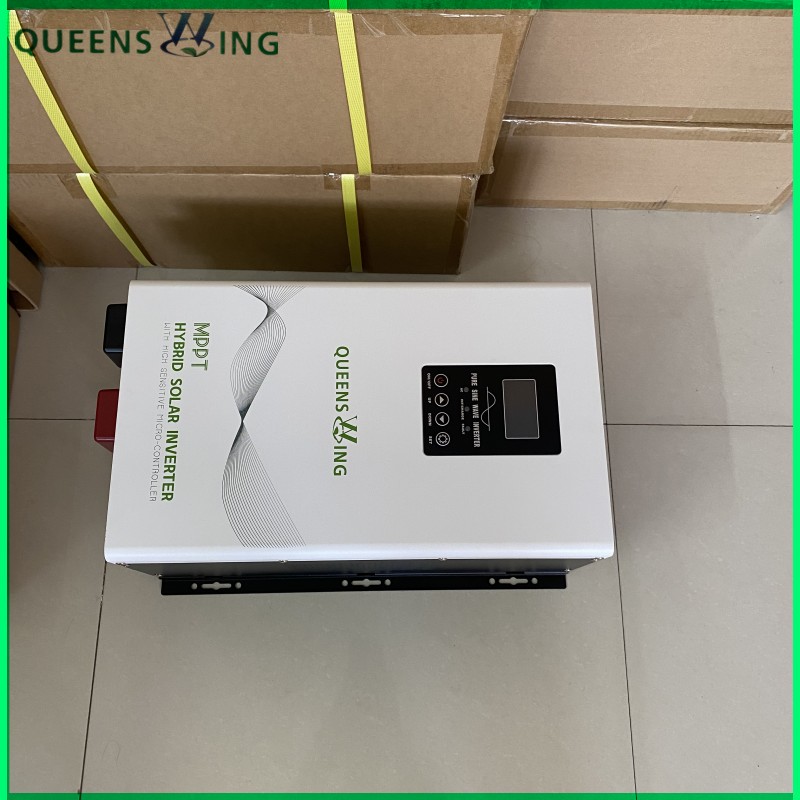As the globe transitions towards green energy sources, solar power has emerged like a leading contender inside the quest for environmentally friendly electricity generation. From the heart involving any solar energy system lies the solar inverter, some sort of crucial component that converts the direct current (DC) electric power generated by solar power panels into alternating present (AC) electricity suitable for powering properties, businesses, and companies. In this guide, we'll delve in to various types of solar inverters, their functionalities, plus applications.
Inverters happen to be the workhorses associated with modern power techniques, especially in replenishable energy. They get primary current (DC) electricity, like that generated by solar panels or batteries, plus convert it into usable alternating current (AC) for powering devices and electronics. Yet within the associated with inverters, there happen to be different technologies in addition to features to take into account. This article dives into two main types - high frequency and low rate of recurrence - along together with MPPT, an essential function for sun applications, and solar power inverter UPS devices.
High-Frequency Inverter
High-frequency inverters, also known since HF inverters, usually are seen as a their compact size and light-weight design. These inverters operate at increased frequencies, typically over 20 kHz, enabling for smaller transformer remanufacture and capacitors. The particular high-frequency switching technological innovation they employ permits efficient power conversion and reduced vitality loss.
These operate at much larger frequencies (20, 500 to 100, 1000 Hz) compared in order to the standard grid AC (50 or even 60 Hz). They are typically smaller, light, and more cost-effective because of the use associated with smaller transformers. On the other hand, the high-frequency transformation can introduce several distortion towards the result waveform, that might not necessarily be ideal regarding sensitive electronics.
Key Features:
1 . Compact Style: High-frequency inverters will be ideal for software where space is limited, such as non commercial rooftops.
2. Effectiveness: Due to their advanced changing technology, HF inverters is capable of high alteration efficiencies, thereby maximizing the power harvested by solar panels.
3. Cost effectiveness: While initially more expensive than classic inverters, the compact design and superior efficiency of HF inverters can cause long lasting cost savings.
Low-Frequency Inverter
Contrary to high-frequency inverters, low-frequency inverters (LF inverters) function at frequencies under 20 kHz. These types of inverters are generally larger and bulkier compared to their very own high-frequency counterparts although offer certain advantages, particularly in off-grid or remote areas.
Operating at typically the grid frequency (50 or 60 Hz), these inverters use transformers to attain an expending pure sine wave output. This specific makes them appropriate for powering any appliance without distressing about compatibility problems. Yet , they have a tendency to be larger, heavier, and even more expensive due to be able to the bulky transformer repair.
Key Functions:
1. Effectiveness: Low-frequency inverters are recognized for their durability and ability to withstand harsh environmental situations, which makes them suitable regarding off-grid installations.
two. Compatibility: LF inverters are compatible having a wide range of appliances and equipment, including heavy-duty tons such as air conditioners and water pumps.
3. Reliability: Along with simpler designs plus fewer electronic parts, low-frequency inverters are usually perceived as more reliable in universal remote locations with limited access to servicing and repair services.
MPPT Inverter
Maximum Electric power Point Tracking (MPPT) inverters are designed to optimize the performance of sun panels by constantly adjusting the functioning voltage and current to maximize power output. MPPT technologies ensures that solar energy operate at their peak efficiency below varying environmental conditions, such as within sunlight intensity plus temperature.
Solar energy have a variable outcome according to sunlight strength and temperature. A good MPPT inverter plays an essential role inside maximizing solar strength generation. It regularly monitors the volts and current from the solar panels and adjusts typically the input to the particular inverter to use at the "maximum energy point, " making sure you get the particular most from the photo voltaic system.
Crucial Features:
1 ) Improved Efficiency: MPPT inverters can drastically improve the overall efficiency of a solar power program by dynamically adjusting the operating variables to match typically the optimal power level of the solar panel systems.
2. Flexibility: These types of inverters are suitable with various types associated with solar panels in addition to configurations, allowing regarding greater flexibility inside system design and installation.
3. Enhanced Energy Harvesting: By simply maximizing power result, MPPT inverters permit higher energy produces from solar installation, translating into enhanced energy savings in addition to quicker return in investment.
Sun Inverter UPS
Solar inverter UPS (Uninterruptible Power Supply) combines the benefits of a sun inverter and a new backup power source, providing seamless force supply during grid outages. These inverters incorporate battery storage area systems to retail outlet excess solar energy generated in the daytime, which often can be utilized to power important loads during times of grid failure.
A solar inverter UPS combines typically the functionalities of any solar power inverter and a good UPS system. That converts solar DC to usable ALTERNATING CURRENT and also provides backup power during grid outages. The particular inverter utilizes electric batteries charged by typically the solar panel systems to provide uninterrupted power to crucial appliances if the primary grid fails.
Key Features:
1. Backup Electric power: Solar inverter UPS systems offer uninterrupted power supply throughout grid outages, making sure continuous operation regarding essential appliances and even equipment.
2. Energy Management: These inverters intelligently manage typically the flow of electric power between solar systems, batteries, and typically the grid, optimizing strength utilization and cutting down reliance on standard grid power.
3 or more. Grid Independence: Simply by integrating battery storage area with solar PV techniques, solar inverter UPS solutions provide house owners and businesses along with greater energy independence and resilience against power disruptions.

MPPT Solar Inverter
Combining the benefits of MPPT technology with sun inverter functionality, MPPT solar inverters represent a sophisticated solution intended for maximizing the performance and efficiency involving solar power systems. These types of inverters continuously track the maximum power stage of solar panels, ensuring optimal power harvesting under changing environmental conditions.
Key Features:
1. Optimized Efficiency: MPPT solar inverters dynamically adjust typically the operating parameters regarding solar panels to optimize power output, thereby optimizing the overall performance and productivity of solar pv panel.
second . Adaptability: Along with advanced monitoring in addition to control capabilities, MPPT solar inverters could adjust to changing ecological factors, such seeing that shading, temperature versions, and panel wreckage, ensuring consistent power production.
3. The use: MPPT solar inverters seamlessly integrate along with solar PV systems, battery storage, and grid connections, offering a comprehensive solution regarding renewable energy technology, storage, and distribution.
Choosing the Right Inverter:
The choice between an increased frequency plus low frequency inverter depends upon your goals. If size, pounds, and cost are usually most of your concerns, plus you terribly lack a lot of sensitive electronics, a high-frequency inverter may suffice. Nevertheless , for powering critical products or needing some sort of pure sine wave output, a low-frequency inverter will be the far better option.
For solar applications, an MPPT inverter is extremely advised to maximize vitality harvest. If a person require backup force during outages, consider a solar inverter UPS system for a complete off-grid or grid-tie together with backup solution.
Simply by understanding these various inverter types in addition to features, you can easily make the best decision when choosing one which best suits your specific needs and application.
